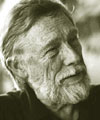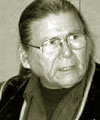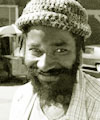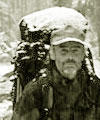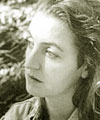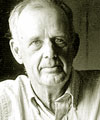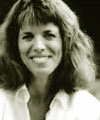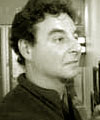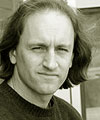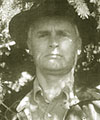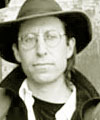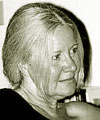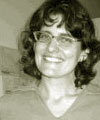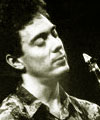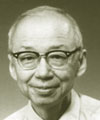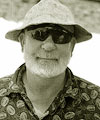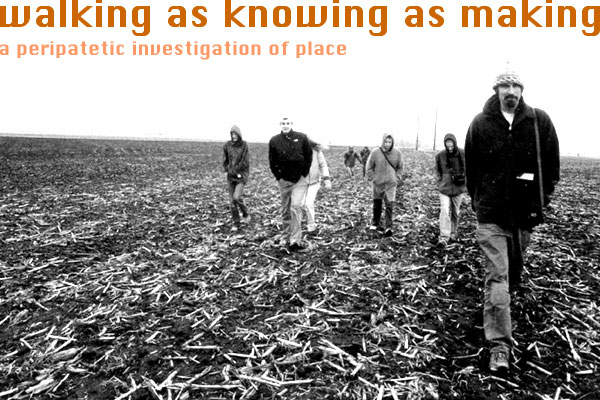 |
... A PROTRACTED SYMPOSIUM ... HOME & INTRODUCTION // SCHEDULE & PARTICIPANTS // BIBLIOGRAPHY & LINKS SESSION I > End of January 2005 (TBA) > Gary Snyder SESSION II > End of February 2005 (TBA) SESSION III > End of March 2005 (TBA) SESSION IV > End of April 2005 (TBA)
During this time in California, from 1976 to 1983, Banks earned an Associates of Arts degree at Davis University and taught at Deganawida Quetzecoatl (DQ) University (an all Indian-controlled institution), where he became the first American Indian chancellor. He also established the first spiritual run from Davis to Los Angeles, California in 1978 (now an annual event) and organized the Longest Walk from Alcatraz to Washington, D.C. that same year. This 3,600 mile Walk was successful in its purpose: to gather enough support to halt proposed legislation abrogating Indian treaties with the U.S. government. In the Spring of 1979 he taught at Stanford University. Later while living on the Onondaga Nation in upstate New York Banks organized the Great Jim Thorpe Longest Run from New York City to Los Angeles, California. A spiritual run, this event ended in L.A. to begin the Jim Thorpe Memorial Games where the gold medals Thorpe had won at the 1912 Olympics were restored to the Thorpe family. In 1985 Banks left Onondaga to surrender to law enforcement officials in South Dakota and served 18 months in prison. When released, he worked as a drug and alcohol counselor on the Pine Ridge Indian Reservation. Banks received the idea of traditional sacred running in 1978 when he began Sacred Run. Since then it has become a multi-cultural, international event with participants from around the world joining Native American runners to carry the message of the sacredness of all Life and of humankind's relationship to the planet, Mother Earth. Each year, Banks leads Sacred Runs. As of 1996, Banks has led runners over 58,000 miles through the United States, Alaska, Europe, Japan, Canada, Australia and New Zealand. In 1994, Banks led the four month WALK FOR JUSTICE (WFJ) from Alcatraz Island in San Francisco to Washington, D.C.. The purpose was to bring public awareness to current Native issues. Dennis Banks stays involved with American Indian issues, AIM activities, Sacred Run, and travels the globe lecturing, providing drug and alcohol counseling, and sharing his experiences. His autobiography "Sacred Soul" was published in 1988 and won the Non-fiction Book of the Year Award. "Ojibwa Warrior: Dennis Banks and the Rise of the American Indian Movement", written by Banks and Richard Erdoes, was published in 2004 by the University of Oklahoma Press.
"To condense the odyssey of anybody's life into a few paragraphs seems mildly criminal, and in the case of Francis it seems positively felonious. A book would hardly catch the details. (Actually, we'll see about this: Francis has just signed a contract with Chelsea Green to write the story of his adventures.) Anything shorter runs the risk of begging more questions than it answers. Caveats aside, here goes: The year was 1971. Two oil tankers collided in the waters off the Golden Gate, spilling 440,000 gallons of crude, catalyzing one man's troubled mind into a whirl of questions: What is my part in this? Why are we living our lives at 60 miles per hour? How can one person make a difference? Then a friend of his died shortly after the spill. Francis commemorated the man's life with a memorial walk from his home in Inverness to San Anselmo and back. In hindsight you could call it a spiritual crisis, some kind of grief that was pushing Francis to break out of the boundaries of his life." "He decided to see what would happen if he stopped traveling in cars. After a few months of walking, his world view was starting to polarize: the elation he felt at his newfound freedom, the despair he felt watching the world pass him by. He could see that if he continued his decision was going to transform his entire life. And yet, so threatened were people by the statement he was making that he found himself embroiled in many a pointless argument. On his 27th birthday he decided to treat himself to a break from all the noise by spending the day in silence. And in the bizarre, inconceivable way that time accretes, that day turned into two, and those two into a week, a month, a year. Before it ended, Francis' birthday gift turned into 17 years of silence. "You have to experience it," he says, looking back on those years, "You can't explain silence by saying something." But for those of us who are more inclined to view such behavior as an aberration, he will point to its virtues: It quieted his mind, it gave him the opportunity to really listen to others, and it kept his intentions from getting diffused in chatter." "Compelling, and well precedented, is the narrative of the sadhu, the silent, wandering holy man who lives completely on the margins of society. Certainly Francis has been no stranger to the margins. Over the years of his pilgrimage he has spent plenty of time painting in the wilderness or strumming his banjo along the side of some blue highway. But what makes Francis' life so remarkable is the extent to which he continued to work within the mainstream. For in those years of silence he earned a B.A. in Oregon, an M.A. in Montana, and got his Ph.D. from the University of Wisconsin."
Fulton first came to prominence in the late 1960s as one of a number of artists - including Richard Long and Gilbert & George - who were exploring new forms of sculpture and landscape art. A central characteristic of their practice was a direct physical engagement with landscape. Fulton's time as a student at St Martin's College of Art in London (1966-68) and his journeys in South Dakota and Montana in 1969, encouraged him to think that art could be 'how you view life', and not tied necessarily to the production of objects. He began to make short walks, and then to make photographic works about the experience of walking. At this time, and subsequently, his practice was influenced by an unusually broad set of interests including the subject of the environment and the culture of American Indians. In 1973, having walked 1,022 miles in 47 days from Duncansby Head (near John O'Groats) to Lands End, Fulton decided to 'only make art resulting from the experience of individual walks.' Since then the act of walking has remained central to Fulton's practice. He has stated 'If I do not walk, I cannot make a work of art' and has summed up this way of thinking in the simple statement of intent: 'no walk, no work'. Although only Fulton experiences the walk itself, the texts and photographs he presents in exhibitions and books allow us to engage with his experience.
SESSION III > Wendell Berry, Chellis Glendinning, Simon Levin & Laurie Long, David Macauley, John Stilgoe
She has written chapters for dozens of anthologies, and her work has appeared in numerous journals, magazines, and newspapers, including San Francisco Chronicle, San Francisco Bay Guardian, New Mexican, Utne Reader, Orion, La Herencia del Norte, Mother Jones , and Earth First! Journal . In 1989 she won the First Times Award for Short Story Writing given by the New Mexico Council for the Humanities. In 1995 she served as Guest Editor for the “Burning Fires: Nuclear Development and Communities of Color” issue of Race, Poverty and the Environment. Glendinning attended Smith College, graduated Phi Beta Kappa from the University of California/Berkeley in 1969; and received her doctorate in psychology from Columbia Pacific University in 1984. She is a licensed professional clinical counselor in the state of New Mexico. She is a founding member of the Washington DC-based Jacques Ellul Society and has served on the advisory boards of Earth Island Institute in San Francisco, CA; EarthWays Foundation in Malibu, CA; the Peace and Conflict Studies Department at UC/Berkeley; Concerned Citizens for Nuclear Safety in Santa Fe, NM; and the Loka Institute in Amherst, MA. She has read her writing or lectured at numerous institutions, including the Center for Psychology and Social Change/Harvard University, Stanford University, Langley Porter Psychiatric Institute, International Society of Political Psychology, American Psychological Association, E.F. Schumacher Society, University of Northern Arizona, Naropa Institute, and Prescott College. Glendinning lives in the northern New Mexico village of Chimayó. She is currently working on poems about village life and essays concerning the social thinker Frantz Fanon, bioregionalism, and social change in an age of globalization.
In developing large-scale projects such as a photo agency for inner city youth, cultivating a vertical community garden downtown, or developing various subversive tele-communication systems, Simon has worked with diverse populations of people. As an extension of his art practice, Simon works with artists and non-artists in the making of public works as a way of pushing social awareness of how public space operates and for whom it is designed to do so. By fostering critical thinking in cultural workers, he believes in the social agency of art making. He has co-authored with Vancouver Art Gallery's Public Programs, a Grade 11 and 12 curriculum on contemporary public art and published a catalogue on the public projects of collective echoes. He was recently the artist in residence at International Art Space, Kelleberrin, Australia with Laurie Long where they launched his GPS applications. He is now artist in residence at the Surrey Art Gallery TechLab expanding his explorations in the use of GPS technology, and relational aesthetics with C.H.A.R.T. Laurie Long, an independent filmmaker, has spent the past decade working in a broad variety of roles in productions ranging from guerilla style performance poetry videos and independent documentaries, to extreme sports television. Her work has been broadcast extensively in Canada, screened theatrically and exhibited internationally. Most recently working as artist in residence at International Art Space Kellerberrin Australia, Laurie collaborated with artist M. Simon Levin on Centre For S.A.L.T Expression - a site-specific multimedia production exploring relational aesthetics in a remote Australian farming community stricken with land salinity. Her ability to make people comfortable in front of her camera has gained her remarkable access into the lives of her many documentary subjects. From exploring SM dungeons and fetish parties, to train hopping with a paraplegic graffiti artist, Laurie explores the lives of characters engaged in exceptional circumstances. In her commitment to exploring diverse voices in marginalized cultures, she works toward changing the demographic landscape of representation in the mainstream media.
Blending his love of philosophy with a growing interest in environmental issues eventually led Macauley to consider the relationship between walking and environmentalism. Concerned that environmental philosophy too often focused on matters related to place and displacement in its treatment of plants, animals, and land at the expense of the motion of people through these regions, Macauley poured over philosophical writings to better understand the meaning of motion. "Walking is an activity that can reconnect us with nature and with ourselves," Macauley says. "We can use walking as a way to reanimate our senses and to see the natural world. Philosophical naturalists like Thoreau recognized this--as did Taoist and Zen Buddhist monks--and understood the elemental relationship of our bodies to the earth. Being aware of this relationship can help us as we look for solutions to current environmental crises." Essays include: "The Art of Ambling: Environmental Aesthetics on the Move", "Walking as Environmental Practice", "Walking the City: An Essay on Peripatetic Practices and Politics", and "Walking and Environmental Aesthetics". Book in progress: "Walking the Earth: Philosophical Foot Notes" (Bloomington, IN: Univ. of Indiana Press, forthcoming 2005).
Outside Lies Magic: Discovering History and Inspiration in Ordinary Places is my latest book, published by Walker & Company of New York. It examines the rewards of walking and bicycling in ordinary landscapes.
SESSION IV > David Abram, Susan Buck-Morss, Danica Phelps, David Rothenberg, Yi-Fu Tuan, Jack Turner
Dr. Abram is also an accomplished sleight-of-hand magician who has lived and traded magic with indigenous magic practitioners on several continents. He began practicing sleight-of-hand magic in his late teens, and it is this craft that sparked his ongoing fascination with perception. When he was nineteen, Abram began working regularly as "house magician" at Alice's Restaurant in Massachusetts, and soon was performing steadily in clubs throughout New England. He took a year off from his studies at Wesleyan University to journey as a street magician through Europe; upon graduating summa cum laude from Wesleyan in 1980, Abram began traveling as an itinerant magician throughout rural parts of Southeast Asia, living and studying with traditional magicians and medicine-persons in Sri Lanka, Indonesia and Nepal. Abram became increasingly fascinated by the interactive relation between these traditional magicians and the various animals, plants, and natural elements that constitute the local terrain. Upon returning to North America, he became a careful student of natural history and ecology while continuing to perform throughout Canada and the United States. A much-reprinted essay originally published in The Ecologist (written while he was studying at the Yale School of Forestry in 1984), entitled "The Perceptual Implications of Gaia," brought Abram into alliance with the scientists formulating the Gaia Hypothesis, and he was soon lecturing in association with biologist Lynn Margulis and geochemist James Lovelock in both Britain and the United States. In 1993, Abram received his doctorate from SUNY at Stony Brook for his work on the ecological dimensions of perception and of language. At the heart of Abram's ongoing research is an examination of the ecology of perception (the manner in which sensory perception bind the human organism into the more-than-human natural world). More recently, his work also analyzes the decisive influence of language upon our perception of the earthly environment, and argues that human language is much more intimately related to the more-than-human natural landscape than has been conventionally assumed. Dr. Abram's papers and essays, in such journals as Environmental Ethics, Orion, The Ecologist, Parabola, and Wild Earth, have been widely reprinted and anthologized in numerous books. His first book, The Spell of the Sensuous, termed "revolutionary" by the Los Angeles Times and the Village Voice, has been described in Science as "a truly original work: Abram puts forth his daring hypothesis with a poetic vigor and argumentative insight that stimulate reconsideration of the technological commonplace . . . With Abram anthropology becomes a bridge between science and its others." (Science, January 10, 1997). Frequently called upon as a spokesperson for wild nature, Dr. Abram has been the recipient of fellowships from the Watson and the Rockefeller foundations. Dr. Abram and his wife, Grietje Laga, are the founders of Alliance for Wild Ethics (AWE), an organization dedicated to ecological education and the rewilding of community and culture.
Rothenberg's first album, "nobody could explain it", was released in 1992 to praise from all musical directions. WVKR in Poughkeepsie decided it's "like ECM on mushrooms." His second record, On the Cliffs of the Heart, with percussionist Glen Velez and banjo player Graeme Boone, was released by New Tone Records in the autumn of 1995. John Cage praised their "sense of virtuosity traveling all over the world." Jazziz named it one of the top ten releases of 1995. His 1997 record, Unamuno, blending improvised music with natural soundscapes, has been featured on National Public Radio in the U.S., WDR German Radio Cologne, and Radio Mafia in Finland. In 1999 he released Bangalore Wild, a collaboration with the Karnataka College of Percussion in Bangalore, India, in collaboration with the WILD Foundation. In 2000 Before the War was released, a collaboration with natural sound artist Douglas Quin, from EarthEar Records in Santa Fe. It was cited as "a notable release" in Billboard, and The Guardian in Britain praised it as "genuine 21st century music." Rothenberg is also a philosopher and writer, author of Sudden Music: Improvisation, Art, Nature (Georgia, 2002) Blue Cliff Record: Zen Echoes (Codhill Press, 2001), Hand's End: Technology and the Limits of Nature (California, 1993), Is It Painful to Think? Conversations with Arne Naess (Minnesota, 1992), and Always the Mountains (Georgia, 2002). He has also edited many anthologies, including The Book of Music and Nature (Wesleyan, 2001), and Parliament of Minds (SUNY Press, 1999) interviews with leading philosophers in conjunction with the PBS series of the same name, of which he was a co- producer. He is the editor of the Terra Nova book series, published by MIT Press, presenting environmental issues as culture, not just policy. His own writing has been anthologized in The Best Spiritual Writing 1999 (HarperSanFrancisco) and The Soul of Nature (Penguin), and his articles have appeared in Parabola, Orion, The Nation, Wired, Dwell, Kyoto Journal, and Sierra. Rothenberg is associate professor of philosophy at the New Jersey Institute of Technology, and he lives in Cold Spring, NY
When asked "Why are you a geographer?" Yi-Fu Tuan's eloquently simple response was, "I have always wanted to know what it is like to live on earth." These words provide a key to the man and his writing; he is not only geographer, but also philosopher and humanist, an unabashed Renaissance man in an age of rigid specialists, as readable an essayist as he is intrepid a scholar. Born in Tientsin, China and educated at Oxford, Professor Tuan came to the United States in 1951, where he received a Ph.D. at the University of California, Berkeley in 1957 and went on to teach at, among others, the Universities of Indiana, New Mexico, Toronto, and Minnesota before coming in 1984 to Wisconsin. In 1987 he received the Cullum Geographical Medal of the American Geographical Society. At present he is J.K. Wright and Vilas Research Professor in the Geography Department at the University of Wisconsin-Madison. Tuan's numerous writings reflect his view of geography in its broadest sense, as the interaction of human being and environment and how we fashion a world out of everything around us: natural and man-made places such as countryside, garden, or city; our fellow animal and human beings; even food, music, study, thought. Early works such as Topophila and Space and Place establish the foundation that leads to his later focus on specific aspects of human life such as the nature of fear in our own and other societies in Landscapes of Fear, or the need of people to control and alter for often selfish purposes plants, animals, and fellow humans such as servants, children, or wives, in Dominance and Affection. In recent works such as The Good Life and Passing Strange and Wonderful, both of which received WLA Outstanding Achievement Recognition, he considers the meaning of ideas like comfort, happiness and beauty in modern and historical times and in various groups and countries. The array of sources he draws on is consistently wide-ranging and eclectic. An original thinker whose intellectual curiosity knows no bounds, Yi-Fu Tuan opens surprising new windows on our everyday world and helps us ponder with amazement its vast and unending diversity.
|
 |
